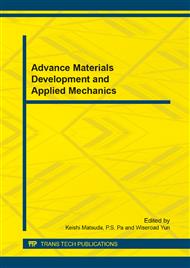p.376
p.380
p.384
p.388
p.393
p.397
p.401
p.407
p.411
Three-Level SVPWM Inverter with Li-Ion Battery Driven for Robot Motor
Abstract:
Space vector Pulse Width Modulation (PWM) method is an advanced; computation intensive PWM method and possibly the best techniques for variable frequency drive application. Because of the constraint that the input lines must never be shorted and the output current must always be continuous, a voltage source inverter can assume only eight distinct topologies. Six out of these eight topologies produce a non-zero output voltage and are known as non-zero switching states and the remaining two topologies produce a zero output voltage and are known as zero switching states. the fluctuation in speed and torque are less when the Space Vector Modulation strategy is implemented in the vector controlled motor. Thus it can be concluded that the overall performance of a motor drive system is improved when Space Vector Modulation technique is used in robot power with the battery operated for industry application.
Info:
Periodical:
Pages:
393-396
Citation:
Online since:
July 2014
Authors:
Price:
Сopyright:
© 2014 Trans Tech Publications Ltd. All Rights Reserved
Share:
Citation:


